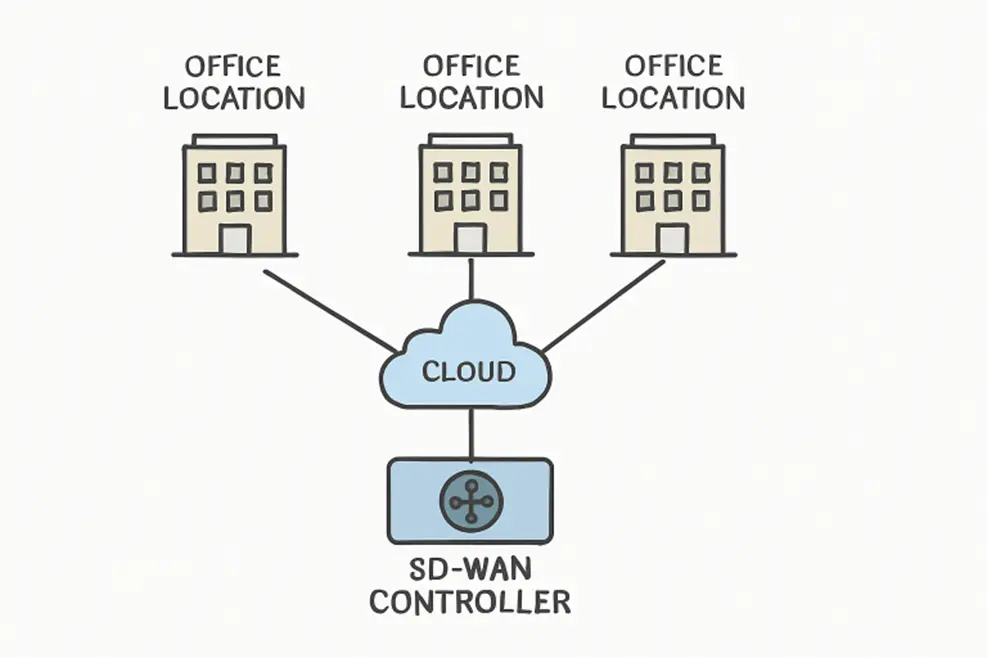How Managed SD-WAN Solutions Are Meeting Today’s Networking Challenges
Organizations today are navigating a rapidly evolving landscape shaped by the widespread adoption of cloud services, remote workforces, and the ever-growing necessity for enhanced security. As demands for bandwidth, agility, and resilience increase, IT leaders are rethinking traditional WAN architectures to enable their digital transformation goals. This is where managed Software-Defined Wide Area Network (SD-WAN) solutions have taken center stage, helping businesses to modernize, protect, and simplify their networks for better performance and scalability. To explore a range of expert options, businesses can review top SD-WAN providers who specialize in designing and managing these systems to address modern networking demands.
Managed SD-WAN leverages automation, intelligence, and centralized policy control to enable secure, high-performance connectivity across multiple sites and cloud resources. This new approach to networking allows organizations to overcome the frustrations that have long plagued WAN environments: complexity, costly bandwidth upgrades, security risks, and inconsistent user experiences.
Understanding SD-WAN
SD-WAN is a network technology that uses software to control the connectivity, management, and services between data centers, branch offices, and cloud platforms. Unlike traditional WANs that relied on expensive, rigid MPLS circuits, SD-WAN aggregates multiple types of transport—such as broadband Internet, LTE, and MPLS—enabling intelligent, real-time traffic steering and secure connectivity.
SD-WAN provides a flexible, centralized interface for enforcing business policies and securely connecting users to applications by decoupling the network control and management functions from the underlying hardware. This agility equips IT teams to rapidly adapt to changing requirements while delivering an improved application experience for users worldwide. By leveraging centralized orchestration, SD-WAN allows IT teams to quickly deploy new sites, applications, or services without extensive manual configuration. Integrated security features, including encryption, firewalls, and segmentation, protect sensitive data across all connections. The technology also improves application performance by dynamically directing traffic along the most efficient paths, reducing latency and packet loss. Analytics and monitoring tools provide real-time visibility into network health, enabling proactive troubleshooting and performance optimization. Overall, SD-WAN empowers organizations to achieve a more resilient, scalable, and cost-effective network infrastructure while supporting modern business demands.
Key Networking Challenges
Enterprise networks are facing unprecedented pressures, including:
- Rising Complexity: As organizations add more locations and cloud services, managing legacy WAN architectures becomes overwhelmingly complex. Multiple devices, vendors, and interfaces increase the risk of misconfigurations and vulnerabilities.
- Expanding Security Threats: The shift to hybrid work and cloud models has widened the attack surface, making traditional perimeter-based security models obsolete. Businesses must defend data in transit across public and private connections.
- Performance Volatility: Distributed workforces place higher demands on application and data delivery, often leading to inconsistent network experiences that undermine productivity.
- Scalability Challenges: As businesses grow, they require networks that can scale quickly to support new locations, users, and cloud services—without complicated, resource-heavy upgrades.
How Managed SD-WAN Addresses These Challenges
- Centralized Management: Managed SD-WAN introduces a single dashboard for configuring, monitoring, and troubleshooting the network, dramatically reducing complexity and operational overhead while enabling consistent policy enforcement.
- Integrated Security: Managed SD-WAN solutions often embed advanced security features, such as next-gen firewalls, end-to-end encryption, and secure web gateways, helping organizations fortify their defenses and address regulatory requirements.
- Optimized Application Performance: Dynamic path selection and real-time traffic engineering ensure critical business applications always receive the bandwidth and priority they require—optimizing both on-site and remote user experience.
- Seamless Scalability: Managed solutions are designed to grow with the organization, supporting rapid expansion without major investments in hardware or network redesigns.
Benefits of Managed SD-WAN
- Cost Efficiency: SD-WAN’s intelligent path control allows businesses to use less expensive Internet links without compromising performance. This leads to significant savings over legacy WANs relying on MPLS circuits.
- Superior User Experience: SD-WAN delivers reliable connectivity and application optimization, ensuring business-critical apps perform well even in remote locations, which translates to greater workforce productivity and satisfaction.
- IT Resource Optimization: With the responsibility of network management shifted to a trusted provider, internal IT teams can reallocate time and focus on innovation and strategic business initiatives.
Considerations for Implementation
- Choosing the Right Partner: Evaluate SD-WAN providers’ experience, service portfolio, and support capabilities. Look for partners who can tailor solutions to your unique architectural and security needs.
- Security Alignment: Confirm that the SD-WAN solution integrates with existing or planned security frameworks, including endpoint protection, threat detection, and compliance monitoring tools.
- Network Assessment: Before migrating to SD-WAN, perform a comprehensive evaluation of your current network infrastructure to prioritize goals and uncover specific gaps related to bandwidth, reliability, and security.
Final Thoughts
The shift to managed SD-WAN represents a strategic transformation for organizations seeking robust, flexible, and secure network infrastructure. SD-WAN enables businesses to align their networks with digital transformation objectives and future growth by addressing complexity, security, performance, and scalability challenges. Businesses working alongside skilled SD-WAN providers can build networks that meet today’s demands and lay a solid foundation for tomorrow’s opportunities. Next, evaluate potential SD-WAN vendors and solutions against these documented requirements, considering scalability, integration capabilities, and support for hybrid or multi-cloud environments. Conduct pilot tests or proof-of-concepts to validate performance, reliability, and compatibility with your existing infrastructure. Incorporate metrics for monitoring network health, traffic prioritization, and security enforcement to ensure the deployment meets business objectives. Establish a clear implementation roadmap with milestones, responsibilities, and contingency plans to mitigate risks. Finally, communicate the rollout plan across the organization to set expectations, secure buy-in, and prepare end users for a smooth transition.

